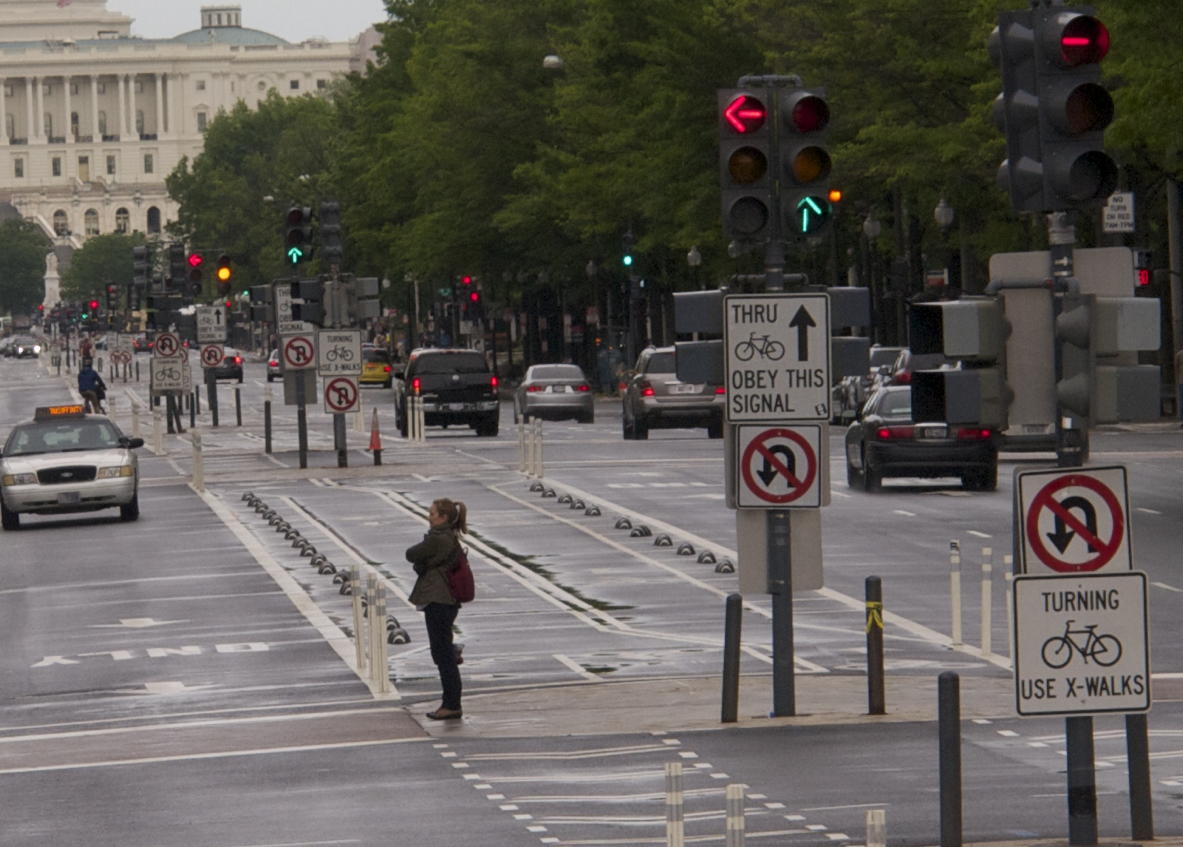Red light cameras increase accident rates
Radley Balko summarizes a University of South Florida study on the safety of red light cameras. The summary: they reduce safety.
But what about those studies that show decreases in accidents after red light cameras are installed? They tend to be funded by people who want that result, and so they cut corners to get the “right” result:
One of those flawed studies credited red light cameras for downward trends in intersection injuries that began long before red light cameras were actually installed. Others lumped continuing decreases in injuries at intersections without red light cameras with actual increases in injuries at the considerably fewer intersections with cameras. They’d then come up with conclusions such as, “our intersections are safer since we installed red light cameras,” taking care to use words like “since” instead of “because.”
Balko also notes that the study doesn’t address the “temptation among some city governments to actually shorten yellow lights at camera-monitored intersections to increase revenue, despite well-documented research showing that shortening yellows is pretty much guaranteed to cause more accidents.”
- November 11, 2014: Turning crime into a profit center
-

Asset forfeiture is in the news again, showing that it is dangerous for the government to make money from crimes; when the government makes money from crimes, it will take steps to ensure that there are more crimes. In the case of asset forfeiture, only a small percentage of asset forfeiture cases are prosecuted. Why would would the government want to prosecute a source of money? The criminal in prison won’t generate assets to seize. The criminal on the street will.

It’s traffic lights all the way down.
If the state benefits from crimes, it will ensure more crimes. The same dynamic applies throughout our traffic laws, but nowhere is it more obvious than with red light cameras.
As the profits build around enforcement, so does the corruption. Red-light camera companies bribe public officials to install their camera systems. Then they bribe them to shorten yellow times below safe levels.
Successful red-light camera programs invariably end up with too-short yellow times, because this increases the number of violations. No consideration is given to shorter yellow times increasing accident rates. If governments are forced to use safe yellow times, the cameras are shut down due to low profits—belying the original claim that they were put up for safety reasons.
That’s ultimately the result of laws that turn crime into a profit center for government: more crimes, less safety. Dangerous criminals go back on the street to generate more revenue, the government turns law-abiding citizens into criminals, because there is money in numbers, and safety is subordinated to budget concerns.
- Study Says Red Light Cameras Cause Death, Mayhem, Acne
- “University of South Florida researchers did find that red light cameras are little more than revenue generators, and actually make intersections less safe than doing nothing at all.”
- Red-light cameras increase crashes and costs, USF report finds
- “Rather than improving motorist safety, red-light cameras significantly increase crashes and are a ticket to higher auto insurance premiums, researchers at the University of South Florida College of Public Health conclude. The effective remedy to red-light running uses engineering solutions to improve intersection safety, which is particularly important to Florida’s elderly drivers, the researchers recommend.”
More red light cameras
- Round Rock vote to terminate Redflex contract
- Round Rock will, this coming Thursday, consider a resolution to terminate their contract with Redflex for red light cameras. I think that’s a great idea.
- Turning crime into a profit center
- Asset forfeiture and traffic laws have one dangerous thing in common: they turn danger into a profit center for government.
- The traffic ticket lottery
- States and cities are treating traffic enforcement as a tax lottery for themselves. Why not turn the winnings over to the voters?
- Money more important than safe intersections
- When cities make money when laws are broken, they’ll ensure that those laws are broken more often. With red light cameras, this means shortening yellow times to unsafe levels.
